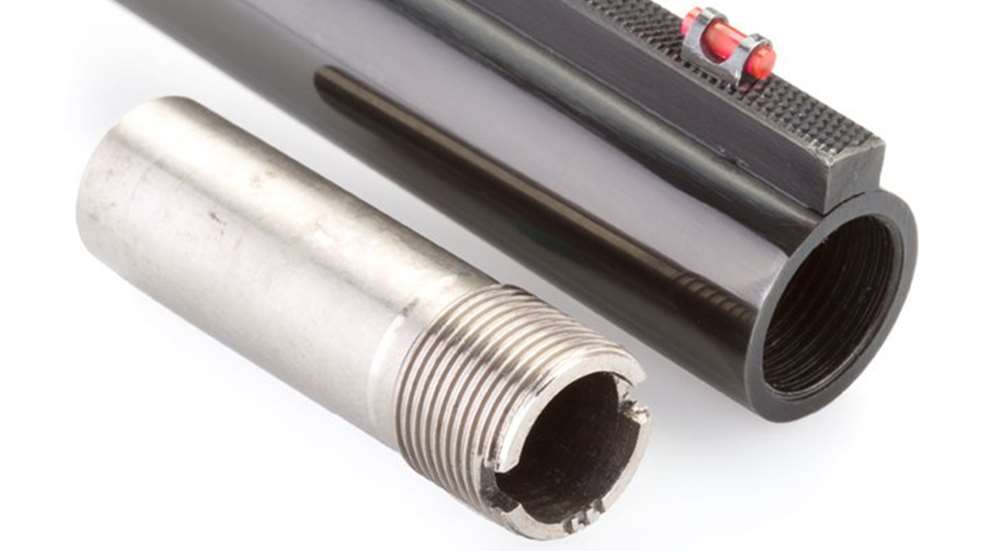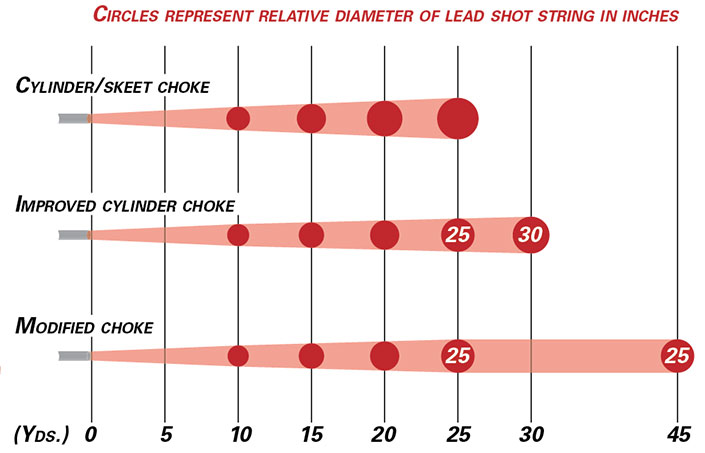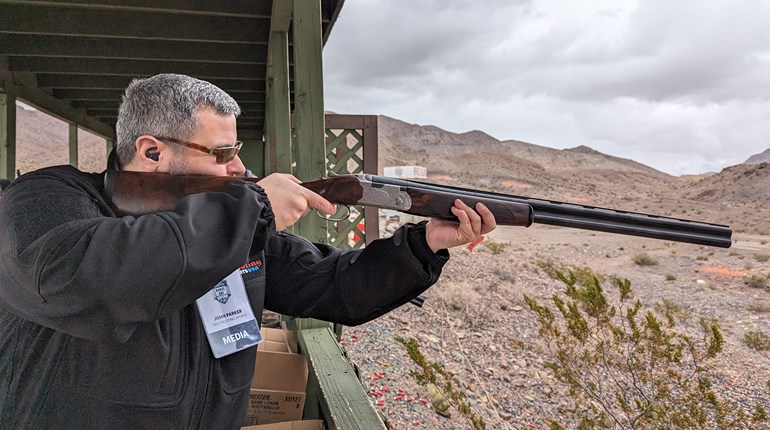
Learning to wing-shoot is a definite challenge—fun, but not easy. To add to that challenge, new or inexperienced shotgun shooters often struggle with understanding what is meant by shotgun “choke.” Afterall, choke is something you can’t see with the naked eye, but is nevertheless crucial for successful shotgunning.
So what is shotgun choke?
Choke is simply a minute constriction built into the last few inches of the inside of a shotgun’s barrel just before the muzzle. The constriction is so small that it’s measured in thousandths of an inch. Older shotguns have what is known as “fixed” chokes, meaning the choke cannot be changed. Newer shotguns, however, frequently come equipped with choke tubes of various constrictions that can easily be screwed in and out of a shotgun to cover multiple shooting situations. The advantage of screw-in chokes is that one shotgun can be used for various applications, from clay-target games (skeet, trap and sporting clays) to different types of hunting.
Why is choke necessary in a shotgun barrel?
Unlike rifles and handguns that shoot bullets one at a time, shotguns shoot many pellets all at the same time. These pellets are collectively known as “shot” and, depending upon their size, hundreds may be fired from just one shotgun shell. But, for a combination of reasons, shot pellets have a natural tendency to separate rapidly from each other as they fly toward a target. The choke controls the spread of shot, adjusting it for different shotgunning distances.
For instance, if you’ll be shooting a round of skeet, you want a more open choke to allow the shot to spread more rapidly, because the clay targets will be flying relatively close to you. On the other hand, if you’ll be hunting waterfowl, you want a more closed choke, as the ducks and geese will likely be flying farther away. The idea is to place a pattern of shot on the clay target or game bird that is dense enough to hit the target, yet not so dense that your pattern size becomes too small, decreasing your chances of making a hit.
In short, pattern density is a compromise. Too open, and a clay target or bird may fly through your pattern; too dense and you risk missing the target altogether.
The development of shotgun choke is credited to two gunsmiths working simultaneously yet separately an ocean apart in 1866: W.R. Pape in England, and Sylvester Roper in America. Before that time, shotgun barrels had no constriction from breech to muzzle, limiting their effective range to only about 30 yards. Today, tightly choked shotguns, combined with modern ammunition, can make shots on clay targets and game birds at twice that distance.
Of course, this assumes you have the skill to hit a flying target at such long ranges, which is not easily done. Most beginning shotgun shooters would do well to limit their shots to 40 yards or less. 
What specific shotgun chokes should I choose for clay-target shooting and bird hunting?
We need to get a little more technical now, but I promise that if you hang with me I won’t ask you to do any math. There are five basic shotgun chokes: cylinder, improved-cylinder, modified, improved-modified and full. (There are several more that are made for specific applications, such as skeet and trap, but for simplicity’s sake let’s keep it at five.)
If a shotgun has a true cylinder choke, that means there is no constriction in the barrel whatsoever; the measurement of the barrel diameter is the same thickness from breech to muzzle. If a shotgun has an improved-cylinder choke, the constriction in the barrel is 0.010 inches. If a modified choke, 0.020 inches. If an improved-modified choke, 0.030 inches. A full choke, 0.040 inches.
Full choke will place 70 percent of the pellets from a shotshell inside a 30-inch circle at 40 yards. However, increasing the barrel constriction any further does not increase the pellet percentage, which is how the 0.040 choke restriction became known as “full choke.” That said, what choke should you use for various distances?
The ideal range for a shotgun with an improved-cylinder choke is 20 to 30 yards. Modified choke is 26 to 42 yards; full choke, 30 to 50 yards. Improved-modified choke distances would fall somewhere between modified and full.
In bird hunting, it obviously helps to know the distances you will likely be shooting before stepping into the field. If you don’t know, and especially if the birds you will be hunting are a species new to you, ask your guide or hunting buddies for their opinion as to which choke is best.
For clay-target games, an improved-cylinder choke is best for skeet, as it is for most sporting-clays courses. For trap from the 16-yard line (by which I mean the shooting station closest to the target house), improved-cylinder is again a good choice. As you move farther back on a trap field, increasing your gun’s choke to modified may be helpful.
There is no substitute for shooting experience which, in turn, produces confidence in your shotgunning skills and ability. So, during practice sessions with clay targets, try various chokes at various yardages to see what you and your shotgun like best.
Finally, when choosing a particular shotgun choke, keep in mind this bit of advice from Bruce Bowlen, author of The Orvis Wing-Shooting Handbook:
“My experience as an instructor has led me to believe that most shooters tend to use too much choke rather than too little,” he said. “This is directly related to most folk’s tendency to overestimate range…and is particularly true when the targets are overhead.”
Bowlen went on to describe a situation during one of his shooting schools where a student told him it would be nearly impossible to break a clay target at the distance they were shooting with anything less than a full choke.
“He was convinced that the improved-cylinder choking on his shotgun was not adequate. Fortunately, there was another member of his group shooting an improved-cylinder who broke about 70 percent of his targets.”







































